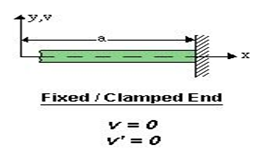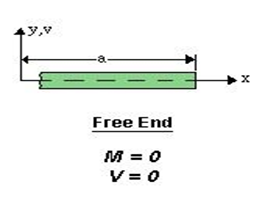How to design a sword structure?
1. Determine whether the sword structure is
suitable for the structure
Sword structures are generally utilised for
high-rise, large-span, complicated frames, heavy cargo or crane lifting, huge
vibration, high miserliness conditions, portable, or constantly put together
and taken piecemeal structures.
Structures include endless structures as well
as colosseums, pieces houses, islands, television halls, manufactories,
storages, garages, and hangars. This fits in with the sword structure’s
characteristics.
2. Structure selection and layout
Given the variety of factors involved, the
layout and selection of the structure should be made with the help of
professional masterminds. It's necessary to punctuate “abstract design ”
throughout the entire sword structure design process since it's pivotal for the
selection and layout of the structure.
The mechanical relationship between the
primary structural system and its subsystems, failure mechanisms, earthquake
damage, experimental marvels, and engineering experience can all be used to
induce design ideas for issues for which it's delicate to conduct a precise
rational analysis. Using a broad perspective, decide the configuration and
specific measures of the control structure. Abstract design can help quick and
effective early generality, comparison, and selection.
During the selection
process, numerous sword structure parameters should be considered. When there's
a lot of snow on the roof, the roof curve should encourage snow sliding. Areas
with high downfall are given analogous considerations. A support frame will be
more cost-effective than one with only connected bumps if the construction is
approved. The major factors of a suspense string or string-membrane structure
system with wide roof spans can be chosen for structures. Steel-concrete
compound structures are constantly used in the design of high-rise sword
structures.
According to the system’s characteristics,
cargo distribution, and nature, the structure’s layout should be precisely
studied. The mechanical model should be unequivocal, and the stiffness should
be invariant. Reduce the influence range of heavy loads or moving loads as much
as you can to ensure that they're transmitted to the foundation as snappily as
doable. Anti-slide support should be distributed inversely among columns. The
centre should be as near to the side force’s action line as possible. However,
the structure should be allowed
about in torsion, If not. There should be
several defence lines on the structure’s contrary side.
On the frame structure’s bottom plan, the
cargo transfer direction of the secondary shafts can sometimes be changed to
accommodate colourful requirements. The attachment shafts are generally
organised in a short path to drop the sampling, but this increases the section
of the main ray and lowers the net bottom height, which can sometimes overwhelm
the side columns on the top bottom. To conserve the main ray and pillars at
this point, the secondary ray can be supported on a shorter main ray.
3. Structural analysis
Now, direct elastic
analysis is generally used in the factual design of sword structures, with p-
Δ, and p- δ being considered when the conditions permit. Recent finite element
software may take sword’s elastic-plastic parcels and geometric nonlinearity
into consideration to some extent. This creates the necessary framework for a
more detailed analysis structure.
Not all structures bear software; typical
structures can be discovered in reference books like mechanical primers to get
internal forces and distortions without using the software.
4. Engineering judgment
The affair result should include “finagled judgment”
if the structural software is used rightly. For case, calculating the overall
shear force, the period of each direction, the distortion parcels, etc. Decide
whether to change the model for new analysis or the computation result grounded
on the “engineering decision.” The conditions that apply to colourful software
vary. The neophyte should comprehend fully. The computations used in
engineering and mechanical computations constantly diverge in specific ways.
Still, applicable conditions, generalities,
and structures will be espoused to ensure the structure’s safety. occasionally
hypotheticals with significant crimes will be used to gain practical design
styles. The quantitative calculation isn't as pivotal in the design of sword
structures as the notion of “applicable conditions, conception, and structure”.
masterminds shouldn't overuse the use of structural software. Engineering
disasters of this nature can be averted by paying close attention to abstract
design and engineering judgment.
5. element design
The selection of accoutrements comes first
when designing factors. Q235, like an A3, and Q345 are constantly used. To
simplify design administration, the primary structure frequently uses a single
sword grade. It's also doable to elect a part that's a mix of swords with colourful
strengths for fiscal reasons. Q345 can be chosen when the intensity controls the
situation. Q235 will be a better option if it's steady. The current proposition
uses the elastic-plastic approach to assess the section when designing factors.
The flexible approach to structural internal force calculation doesn't match
this.
All of the structural software programs
available moment have sampling verification post-processing features. Some
software now has the option to move over one position from the handed sampling
library for factors that failed the test due to advancements in program
technology. And automatically rethink and corroborate the computation till it's
successful, like sap2000. One of the purposes of sampling optimisation design
is to achieve this. For engineers, it significantly decreases work.
6. Drawing
medication
The design drawing for a sword structure is resolved into two stages the construction detail delineation, and the design
drawing company provides the design sketch. According to the design
delineation, the sword structure manufacturing establishment generally prepares
the construction detail delineation; still, the design company sometimes does
so.
The creation of detailed construction
delineations is grounded on design delineations. The delineation and its
contents must be finished. To make the process of creating detailed
construction delineations that directly reflect the design intent easier, the
design delineation should easily express the design base, cargo data,
specialized data, design conditions, structural arrangement, element sampling
selection, and main knot structure. A list should be used to display the
primary accoutrements.
Detailed construction delineations are
frequently known as stakeout delineations or processing delineations. The
delineation must be acceptable for direct manufacture and factory processing. A
complete list of accoutrements must be attached, and any fresh element units
that aren't the same must be drawn and described collectively.
Er. SP. ASWINPALANIAPPAN.,
M.E., (Strut/.,)., (Ph.D.,)
Structural Engineer
http://civilbaselife.blogspot.com





